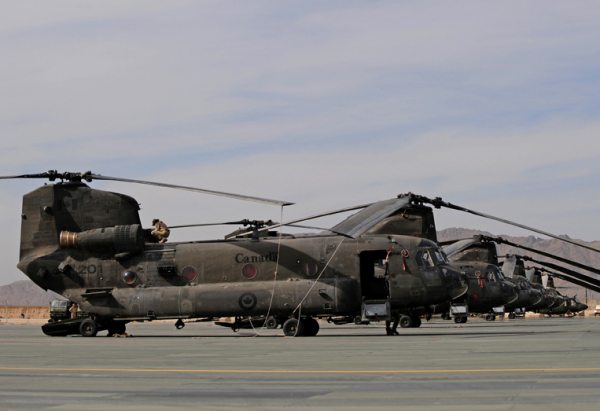After nine years, 157 troop deaths and over US$11 billion spent, Canada’s combat mission in Afghanistan finally comes to an end this week.
With popular support for the war sapped at home, some of the nearly 3,000 Canadian troops, based mainly in the dangerous battleground of Kandahar, have already started returning from Afghanistan, and the rest will follow soon.
In recent days and weeks they have been completing their final patrols, packing up dusty outposts and gathering at the giant Kandahar airfield military base to debrief before starting to catch their flights home.
The official end of Canada’s hard-fought mission, which began in early 2002, a few months after the US-led invasion of the country, comes on Thursday.
Other countries have also announced partial troop withdrawals as Western voters tire of nearly a decade of war, but the Canadians are the first major troop contributor to start sending forces home this year.
On Tuesday, Canadian troops handed over control of their last district in a flag-lowering ceremony, a key symbolic step in the drawdown process, although the Americans have already been in place for weeks.
The ceremony at Forward Operating Base Ma Sum Ghar, a rocky outpost surrounded by snipers in Kandahar’s Panjwayi district, saw US forces formally take control from Canada’s 1st Battalion Royal 22nd Regiment.
Last month, US President Barack Obama announced that he would withdraw 33,000 US troops from Afghanistan by the end of 2012, while France, Belgium and Britain have also said they will soon bring some troops home.
All foreign combat forces are due to leave by the end of 2014 and hand security to Afghan forces.
Canadian commanders insist they have made strong gains since they moved into Kandahar, the Taliban’s birthplace and one of the war’s fiercest hotspots.
Lieutenant Colonel Michel-Henri St Louis, the battlegroup commander who represented Canada at the handover ceremony, said the mission began in Kandahar in 2006 with some severe fighting.
“Then since those very difficult engagements, this has served as a centre point for command and control and logistics in south Afghanistan,” he said.
“Ma Sum Ghar is really symbolic of that effort, it has been at the centre of our deployment.”
Brigadier General Ahmad Habibi, Afghan commander in the area, paid tribute to the Canadians, part of whose role has been to help build up his forces.
“You have all earned a great name in the heart of people in Afghanistan and please take that with pride to your homes,” he told the ceremony.
But question marks remain over controversial claims that Canada transferred Afghan prisoners to Afghan custody knowing they could face torture.
The Canadian government insists that top-secret files released last month show the allegations are not credible.
Public opposition to the war in Canada is growing, with a poll earlier this year by Vision Critical/Angus Reid indicating that 63 percent of Canadians opposed it, compared to 47 percent in 2010.
Canadian Prime Minister Stephen Harper first pledged in 2008 that troops would leave this year.
After US forces killed Osama bin Laden in Pakistan in May, he said he believed Afghanistan was “no longer a source of global terrorism.”
While many troops say they feel elated to be going home to their families, commanders insist they will stay focused on the job right up until the end.
A separate Canadian training mission involving 950 troops will work in Kabul with Afghan security forces as locals take an increasing role in protecting their own country, despite lingering questions about their capabilities.
Canada will also continue to give aid to Afghanistan, and its overall involvement between now and the end of 2014 is expected to cost around US$700 million a year.










